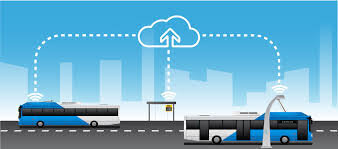Enhancing Public Transportation Through AI
The integration of Artificial Intelligence (AI) into public transportation systems is revolutionizing urban mobility, making it more efficient, reliable, and user-friendly. By leveraging real-time tracking, dynamic scheduling, and passenger information, AI technologies are transforming how transit agencies operate and how passengers experience travel.
Real-Time Tracking and Dynamic Scheduling
AI enables public transit systems to utilize real-time data for tracking vehicles and optimizing routes. Through the analysis of historical and live traffic data, AI can predict demand and adjust schedules accordingly. This leads to reduced waiting times and improved service reliability. For instance, AI algorithms can analyze traffic patterns and incidents, allowing transit agencies to reroute buses or trains in response to unexpected delays, thus maintaining a consistent service flow[2][3].
Smart Public Transit Applications
Public transit apps are a crucial component of this transformation. These applications provide passengers with real-time updates on vehicle locations, estimated arrival times, and service alerts. By integrating AI, these apps can offer personalized trip recommendations based on user preferences and historical travel behavior, enhancing the overall passenger experience[3].
Smart Bus Stops and Infrastructure
Smart bus stops equipped with digital displays can relay real-time information to waiting passengers, including arrival times and service changes. These stops can be connected to AI systems that monitor traffic conditions and adjust transit schedules dynamically. This connectivity ensures that passengers receive timely updates, improving their overall travel experience[1][5].
Safety Enhancements
AI also plays a significant role in enhancing safety within public transportation systems. For example, AI-powered surveillance systems can monitor transit environments to detect unusual activities or potential hazards, allowing for quicker responses to safety concerns. Projects like the one implemented by NJ TRANSIT, which uses AI to analyze video data at rail crossings, aim to reduce accidents and enhance community safety[4].
Sustainability and Efficiency
AI contributes to the sustainability of public transportation by optimizing fuel consumption and reducing emissions. By determining the most efficient routes and schedules, AI helps transit agencies minimize their environmental impact while maintaining high service levels. This is particularly important as cities strive to meet sustainability goals and reduce their carbon footprints[3].
Conclusion
The integration of AI in public transportation systems is not merely a technological upgrade; it represents a fundamental shift towards smarter, more responsive urban mobility solutions. With advancements in real-time tracking, dynamic scheduling, and enhanced safety measures, AI is set to redefine the public transit landscape, making it more efficient, safe, and user-friendly for passengers across the globe.
Further Reading
1. Harnessing AI to Create Smarter Connected Public Transport | Railway USA
2. How to Integrate AI in Public Transport Systems for Efficiency | Attract Group
3. https://www.forbes.com/sites/forbestechcouncil/2024/02/01/how-artificial-intelligence-is-shaping-public-transit/
4. CAIT Researchers Will Use AI-powered Technology to Make Public Transit Safer – Rutgers CAIT
5. https://lyt.ai/press-release/lyt-and-hayden-ai-partnership-announcement/


